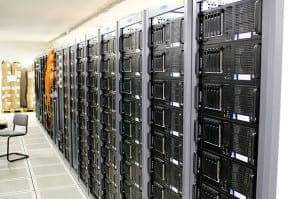It is important to know what is special right now to make machine learning an attractive field to study. Knowing why it is popular now can act like a guide together with knowledge of the promise that the field makes. It can highlight open questions and methods which are growth areas and why that may be the case.
Machine learning is popular now. An example of this popularity has been the response to Stanford’s online machine learning course that had hundreds of thousands of people showing expressions of interest in the first year. Also Google Trends that tracks the popularity of search terms, suggests that searches for machine learning are about to out-pace the searches for artificial intelligence. Machine learning is moving beyond the textbooks, with technical publishers like O’Reilly and Manning publishing books on machine learning for a lay technical audience.
In this post we will review the confluence of factors that has resulted in machine learning to be popular, now.
Matured Field
The field of machine learning has matured a lot in the last decade, and changed a lot in the last few years.
Machine Learning grew out of the field of artificial intelligence and was a collection of methods that learned from data or experience. Included in this offshoot were fields like genetic algorithms and swarm intelligence, that can be considered methods that learn from their environment.
Through the late 1999s and 2000s these biologically inspired methods have further separated into their own distinct field, often called metaheuristics or computational intelligence, leaving machine learning to focus on methods that learn from data.
This maturation has focused on drawing heavily from the field of statistics to both reappropriate methods and to promote a statistical and probabilistic underpinning for the methods in the field. As such, the machine learning monicker is moving to that of statistical machine learning.
In addition to the maturation of the identity of the field, the methods used in the field have matured. Powerful methods have been developed and their principles are well understood in statistical and probabilistic frameworks. The tools that implement that methods have also been maturing for 10 and 20 years, tools such as the R statistical workbench and the Weka framework. The methods have and continue to move into the mainstream.
Abundant Data
There is an abundance of data right now, and data that is being collected and stored is growing.
Phrasing like “information overload” comment on the information available to average people. There is so much information coming at us from email, social networking, blogs, RSS and podcasts. It’s hard to impossible to keep up. Concerns of missing useful content and the stress of finding and tracking the best content are very real. Machine Learning methods provide the tools to locate and recommend the most relevant content to you in order to overcome information overload.

Photo credited to k0a1a.net, Some rights reserved
The systems we use and interact with every day are creating data that describe those interactions. Phrasing like “data exhaust” are used to describe the creation of this data. This data can be valuable to the organizations that are collecting it, and it can be valuable to you, the instigator of the data creation if the data is made available. Machine learning offers the methods to turn data collected from such an exhaust into meaningful information from which to drive decision making.
There is data that is being and can be collected that has not been collected for individuals or at scale before. Groups like Quantified Self are exploring all of the ways of tracking and collecting everyday information about people from biological information like heart beats, breaths, steps, to interactions such as conversations and words spoken. Mobile phones are covered in sensors that can monitor orientation, location, audio and video of the surrounding area.
These streams of data can meet at confluence points like people, locations, and organizations and questions can be answered that had not even been conceived could be answerable.
An offhand example would be the modeling your mental state (like boredom or procrastination) at a location (like your home office) and triggering interventions (like inspiring targeted action) to optimize towards some goal (like productivity). Machine learning methods provide the capability to model complex problems using large volumes of seemingly disparate data.
Abundant Computation
Computation is abundant and it is cheap. This is why there is an abundance of data and why we have more powerful machine learning methods available.

Photo credited to torkildr, some rights reserved
For as long as I can remember, I have written scripts and programs for long runs of algorithms. I would think really hard about what question I wanted to answer (like which algorithm is better, which algorithm parameters is better, etc), write the script or program to answer that question and run the experiment overnight, while I was at work and even all week long.
The world has changed a lot and there are very powerful computers that you can rent at cents to a few dollars per hour and run very large experiments on immense data sets.
Cheap abundant computation allows you to run experiments on hosted infrastructure that you would never consider running on your workstation or home PC.
This abundant computation also means that you can write systems that do more than they are use to. It was the case that all the CPU time when running a computer game was given to the graphics engine. Slowly and steadily, more and more computation is available to the AI, allowing the computer controlled opponents to be smarter and more engaging. This is an analogy for the use of computation generally. We have so much and it’s so cheap that we actively design systems to syphon cycles away from core activities to do things we would not have previously considered. For example modelling individual users to customize user interfaces of application and websites and running advanced reports on customer behaviour in web startups, both actions that typically were previously only available to large enterprises.
Machine learning is popular because computation is abundant and cheap. Abundant and cheap computation has driven the abundance of data we are collecting and the increase in capability of machine learning methods.
In this post you learned that machine learning is popular now for three reasons:
- The field has matured both in terms of identity and in terms of methods and tools.
- There is an abundance of data to learn from.
- There is an abundance of computation to run methods.
Do you have some ideas on how you can make use of the abundance of computation and data and the mature field of machine learning? Leave a comment.







It is crazy indeed!! Is possible to see somewhere list of all interesting projects in Machine Learning and how far they got? I am interested biology.
I love weather forecasting by machine learning
The truth is that I need a complete machine learning case from start to finish. Up till now, I read loads of stuff in ML but no complete clue what it’s like. I would be happy to have a typical example – from scratch to algorithm (why choose it) to decision making (why the decision making)
There is this saying from Dan Anely that ”Big data is like teenage sex: everyone talks about it, nobody really knows how to do it, everyone thinks everyone else is doing it, so everyone claims they are doing it…”
Thank you as I awaits your kind response.
Hi Eze, I don’t cover big data, sorry, but I do have plenty of end-to-end worked examples.
Here is a beginner example in Python:
https://machinelearningmastery.com/machine-learning-in-python-step-by-step/
Here is a beginner project in R:
https://machinelearningmastery.com/machine-learning-in-r-step-by-step/
I think that the abundance of data nowadays will foster the origination of more and more preventive systems. If we think about, most of the systems we have today are actually reactive. A field that could benefit from the tons and tons of social media data is counterterrorism or crime detection before it happens (such as in Minority Report, only without the weird people making predictions, haha).
What do you think about it?
Great ideas!
Try Kaggle
Great suggestion.
https://www.kaggle.com/search?q=biology
Good evening,
I think that we could use machine learning in energy field to monitor energy efficiency and limit world pollution.
Hi Oumaima…The following resource may be of interest to you:
https://machinelearningmastery.com/how-to-develop-lstm-models-for-multi-step-time-series-forecasting-of-household-power-consumption/